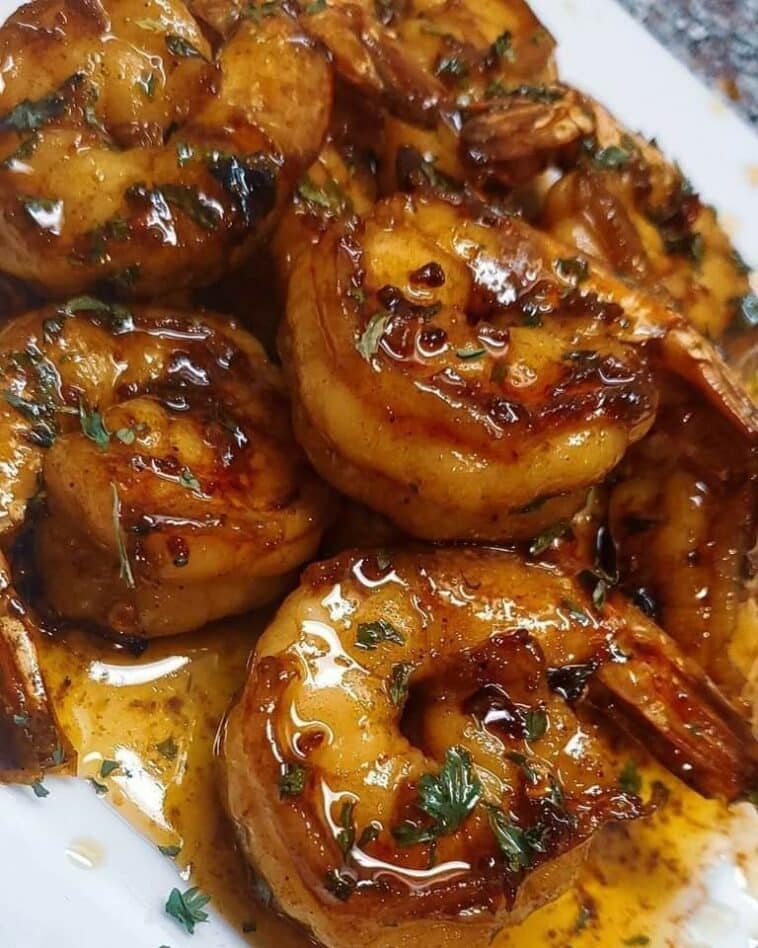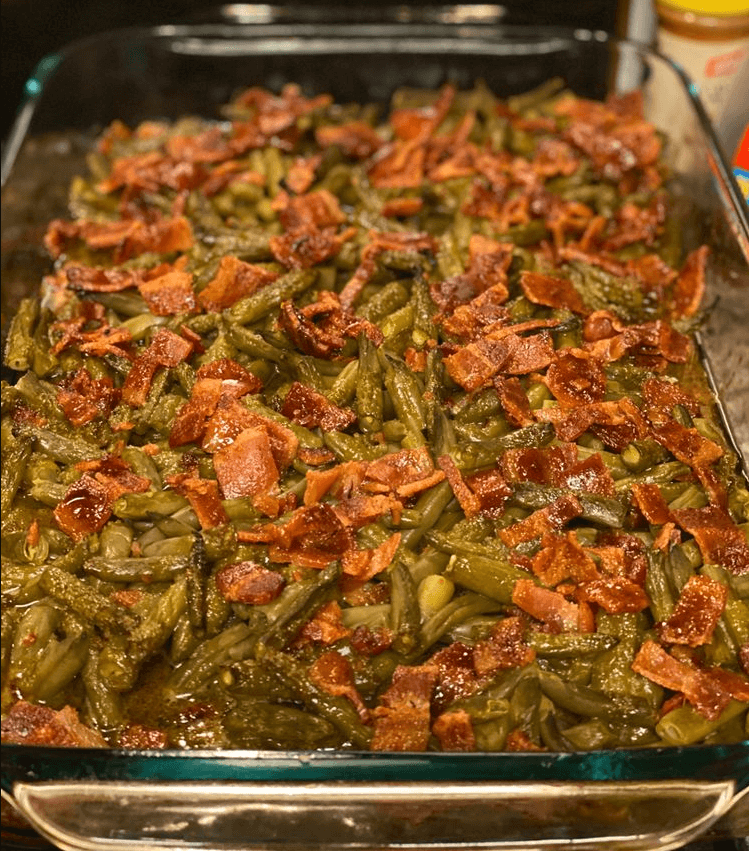The Best & Easy Pancit Canton Bihon

A Comforting Family Favorite: The Best & Easy Pancit Canton Bihon
Growing up in a Filipino household, there was one comforting sound I knew meant something special was happening in the kitchen—the satisfying sizzle of sliced pork and garlic hitting hot oil. For me, The Best & Easy Pancit Canton Bihon isn’t just a noodle dish; it’s a warm memory, tangled with laughter and shared reunions, and honestly, the smell wafting through the house is almost as good as the meal itself. If you’re searching for a delicious, reliable pancit recipe that won’t keep you in the kitchen for ages, you’ve found your new go-to!
Why You’ll Adore This Pancit Canton Bihon
Let’s be real: some recipes feel like chores, but this one? It’s pure joy on a plate. Here’s why you’ll love making (and eating!) Pancit Canton Bihon:
- Quick and Easy: Despite the big, bold flavors, this easy pancit dish comes together in about 30 minutes—so you won’t be tied up in front of the stove all day.
- Versatile and Filling: Whether you’re prepping for a weekday dinner or looking to impress for a potluck, pancit canton bihon is always a hit—plus, it’s super customizable!
- Flavorful and Nostalgic: Thanks to the perfect balance of oyster sauce, soy sauce, and aromatics, every bite is bursting with the familiar taste of home.
- Feeds a Crowd: This recipe makes generous portions, perfect for gatherings (or just leftovers for tomorrow’s lunch, trust me).
Ingredients You’ll Need for Pancit Canton Bihon
Here’s everything you’ll want on hand to whip up this Filipino noodle classic:
- 450g sliced pork: I love using pork shoulder for its richness, but leaner cuts work great, too.
- 400g mixed noodles (pancit canton & bihon): Combining egg noodles and rice vermicelli gives the best texture—don’t skip the mix!
- 5 cups hot water: This becomes your flavorful broth base (saving time and boosting taste).
- 2 carrots, julienne cut: Sweet and colorful, they add crunch and vibrancy.
- 200g green beans, trimmed: I slice them at a slight angle for a prettier look.
- 2 medium onions, sliced: Yellow or red onions both add depth.
- 6 cloves garlic, minced: More is always better—fragrance central!
- Chopped celery (as desired): Totally optional, but I love the extra flavor and freshness.
- 2 tbsp oyster sauce: For that irresistible savory note.
- Soy sauce (to taste): Adds umami and salt—start slow, you can always add more.
- Ground black pepper: Freshly cracked, if possible.
- Cooking oil: Use a high-heat oil like canola or sunflower for the best stir-fry.
Pro tip: Prep and slice your veggies before you start—that way, everything goes smoothly once the cooking begins! (That “mise en place” thing is truly a lifesaver here.)
Step-by-Step Guide: Making the Perfect Pancit Canton Bihon
Here’s how I make this hearty, homestyle dish—no stress, just straightforward steps:
- Stir-fry the veggies: Heat oil in a large pan or wok. Toss in your carrots and stir-fry for about 2 minutes. Add the green beans and cook for another couple of minutes. (I like my veggies a little crisp!) Remove and set aside.
- Sauté aromatics and pork: Throw in your onions, give them about 20 seconds, then add garlic. When it’s fragrant (your kitchen will smell amazing!), add the pork. Stir-fry for 3 minutes on medium heat. Season with soy sauce and black pepper.
- Simmer: Pour in the oyster sauce, making sure it coats the pork. Add 5 cups hot water, cover, and let everything simmer for about 10 minutes—or until the pork is tender and flavorful.
- Cook the noodles: Remove the cooked pork and set aside (don’t lose the yummy broth!). Gently add the bihon noodles into the simmering broth, letting them soften. Next, add pancit canton noodles and cook for another 2 minutes, stirring to combine.
- Bring it all together: Return your pork to the pan. Add back those sautéed veggies and toss in the celery. Mix everything well—those noodles should be soaking up all the goodness!
- Serve: Turn off the heat and serve warm, straight from the pan. I guarantee friends and family will be circling the table by now.
My Secret Tips and Tricks for Pancit Canton Bihon Success
Making pancit canton bihon might seem intimidating if you’ve never tried before, but I promise, you’ve got this! Here’s what I’ve learned along the way (and yes, from a few starchy noodle mishaps!):
- Don’t Overcook the Noodles: Keep a close eye as they soften—bihon absorbs liquid quickly. Stir constantly to prevent sticking.
- Taste and Adjust: The soy sauce can sneak up on you! Taste before adding extra salt (especially since oyster sauce is salty, too).
- Veggie Crunch: Pull the veggies off the heat while they’re still vibrant and crisp—they’ll finish cooking when you toss everything together.
- Broth Matters: If it looks a bit dry, splash in a touch more hot water as you mix everything—no one likes clumpy noodles!
This is all about the easy pancit vibe, so don’t stress if it’s not picture-perfect. The flavors are what matter most.
Creative Variations and Ingredient Swaps
Pancit canton bihon is so forgiving—here’s how I like to mix things up:
- Swap the Protein: Chicken breast, shrimp, or tofu (for a vegetarian pancit) are all fabulous alternatives to pork.
- Bulk Up the Veggies: Cabbage, bell peppers, or baby corn add extra color and nutrition. Use what’s in season or what your family loves!
- Gluten-Free Option: Use only pancit bihon (rice sticks) and double-check the labels on your sauces.
- Sauce Swap: Fish sauce or a dash of hoisin can subtly shift the flavor profile.
- Spicy Pancit: Add sliced chilies or a spoonful of chili garlic sauce for a kick.
Whatever version you try, this easy noodle dish adapts to your mood and pantry. That’s why it’s such a household favorite!
How to Serve and Store Your Pancit Canton Bihon
Pancit canton bihon is absolutely meant for sharing—a big family bowl or party tray always looks so inviting. Here’s how I get the most from every batch:
- Serving: Sprinkle with fresh calamansi or lemon juice just before digging in. For extra crunch, top with fried garlic or sliced green onions.
- Pairing: Serve alongside lumpia (spring rolls) or grilled meats for a festive Filipino meal.
- Storing: Got leftovers? Lucky you! Store in an airtight container in the fridge, and reheat gently with a splash of water in a skillet. Noodles can dry out fast, so don’t skimp on that extra moisture.
This homemade pancit reheats beautifully—honestly, some say it’s even more flavorful the next day!
FAQs: Your Top Questions About Pancit Canton Bihon Answered
1. What makes this “The Best & Easy Pancit Canton Bihon”?
The blended noodles (canton and bihon) give you both chew and silkiness, while simple steps and pantry ingredients keep it easy—without sacrificing authentic flavor!
2. Can I make this noodle dish ahead of time?
Absolutely—pancit is designed for parties! Make it a day ahead, store in the fridge, and gently reheat before serving (add a small splash of water to loosen).
3. Is pancit canton bihon gluten-free?
As long as you stick to bihon only (no canton) and use gluten-free soy and oyster sauces, you can totally make this a gluten-free pancit.
4. Can I freeze leftover pancit canton bihon?
Technically, yes, but be aware the noodle texture can get a bit mushy after defrosting. It’s best enjoyed fresh or within a couple of days from the fridge.
5. What’s the difference between pancit canton and bihon?
Great question! Pancit canton is a type of yellow egg noodle (similar to lo mein), while bihon is a thin rice vermicelli. Combined, you get the best of both worlds—taste and texture!
So, next time you’re craving the comforting flavors of home or just want to try an easy pancit recipe that’s packed with nostalgia and joy, I hope you’ll give this Best & Easy Pancit Canton Bihon a go. I’d love to hear about your family’s favorite pancit memories (or see your noodle-swirling photos)—let’s keep the tradition deliciously alive!

Pancit Canton Bihon
Ingredients
Main Ingredients
- 450 g sliced pork Pork shoulder is recommended for richness.
- 400 g mixed noodles (pancit canton & bihon) Combining egg noodles and rice vermicelli gives the best texture.
- 5 cups hot water This serves as the flavorful broth base.
- 2 medium carrots, julienne cut Adds crunch and vibrancy.
- 200 g green beans, trimmed Slice at a slight angle for presentation.
- 2 medium onions, sliced Yellow or red onions both work well.
- 6 cloves garlic, minced More garlic enhances the fragrance.
- as desired chopped celery Optional but adds extra flavor.
- 2 tbsp oyster sauce Provides an irresistible savory note.
- to taste soy sauce Adds umami; start with a little and adjust.
- to taste ground black pepper Use freshly cracked for best flavor.
- as needed cooking oil Use a high-heat oil like canola or sunflower.
Instructions
Preparation
- Heat oil in a large pan or wok. Stir-fry the carrots for about 2 minutes, then add the green beans and cook for another 2 minutes. Remove and set aside.
- In the same pan, sauté the onions for about 20 seconds, then add the garlic. Once fragrant, add the sliced pork and stir-fry for 3 minutes. Season with soy sauce and ground black pepper.
Cooking
- Pour in the oyster sauce to coat the pork, then add 5 cups of hot water. Cover and let simmer for about 10 minutes or until the pork is tender.
- Remove the pork, but retain the broth. Add bihon noodles to the simmering broth, letting them soften. Then add the pancit canton noodles and cook for another 2 minutes, stirring to combine.
Finishing Touches
- Return the pork to the pan, add back the sautéed vegetables and toss in chopped celery. Mix everything well, ensuring the noodles soak up the broth.
- Serve warm, straight from the pan. Enjoy with friends and family!





